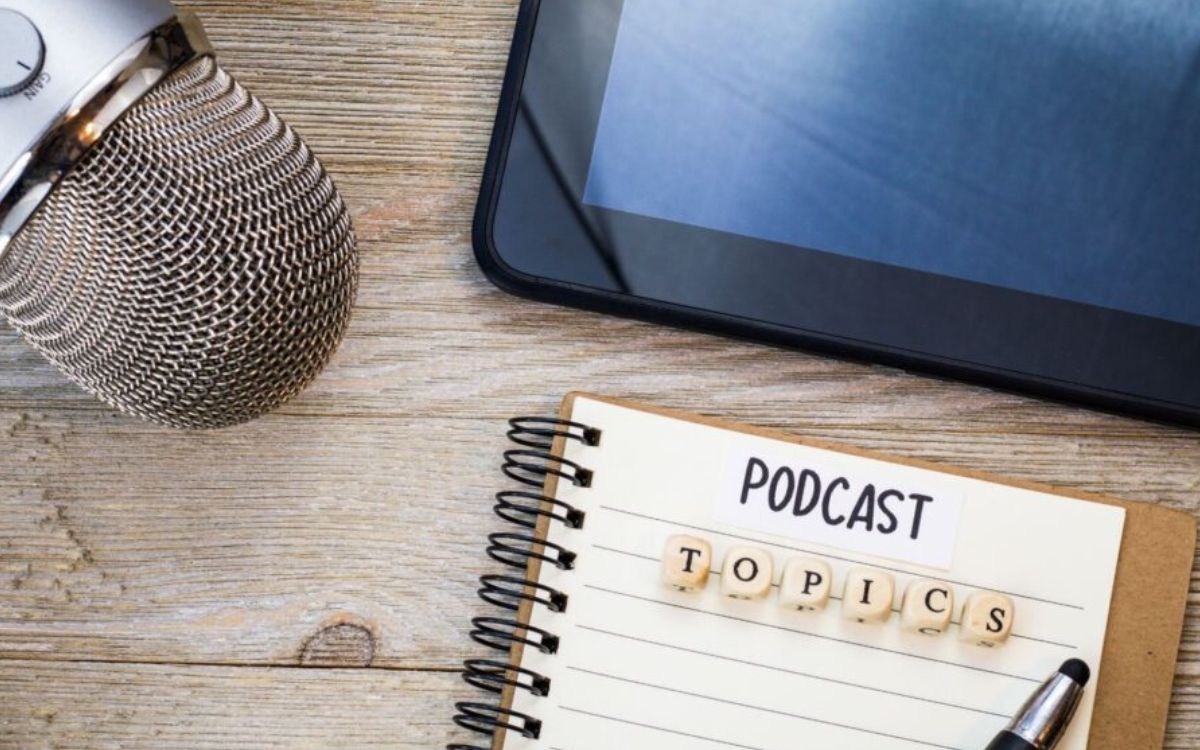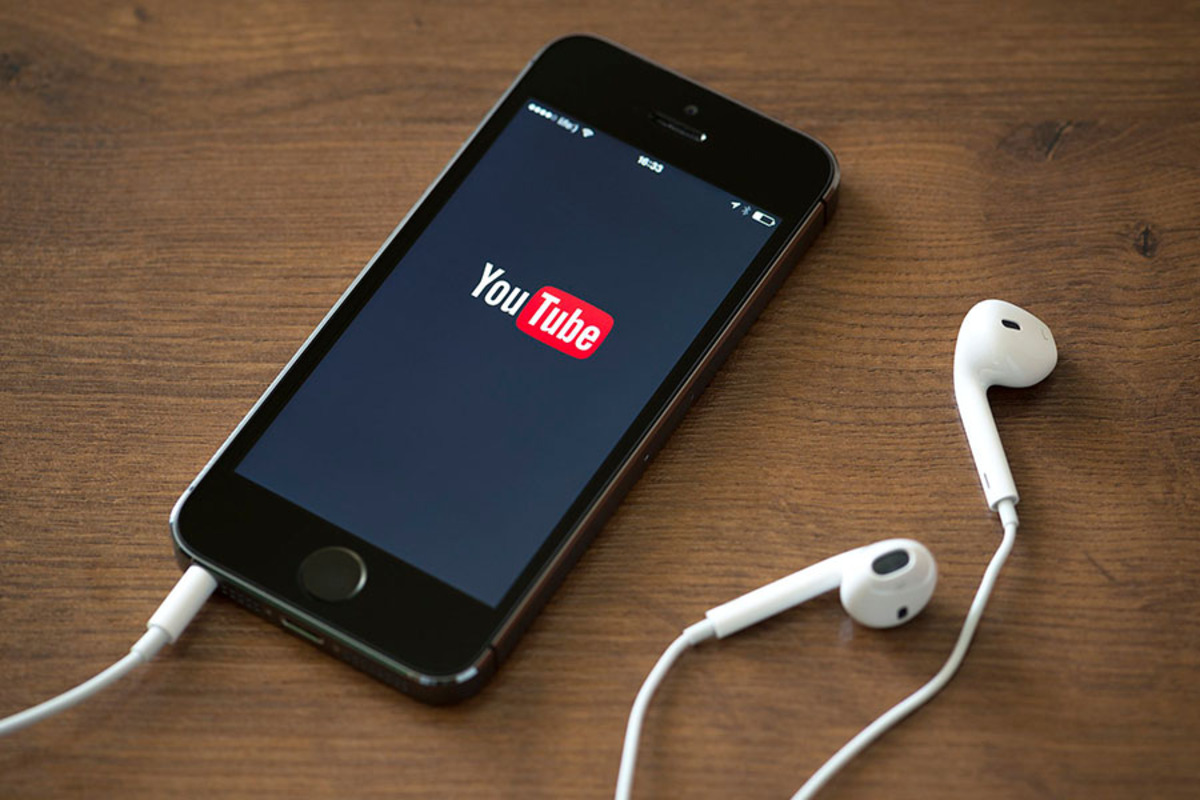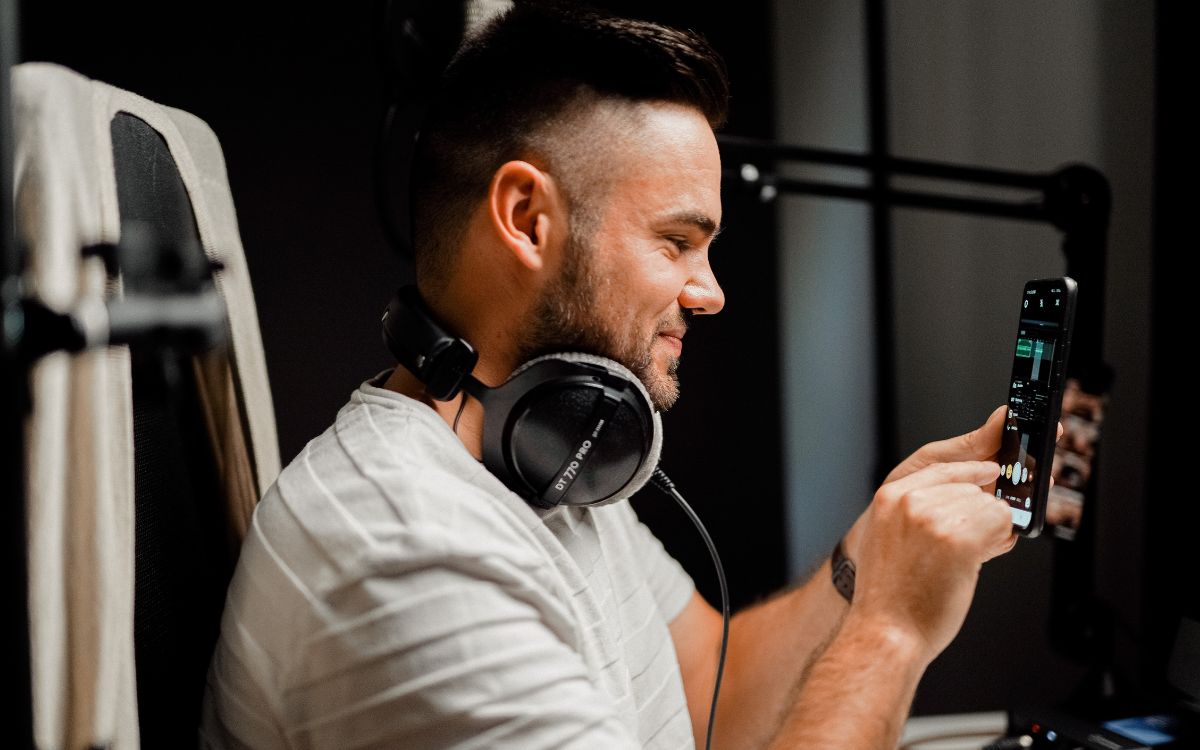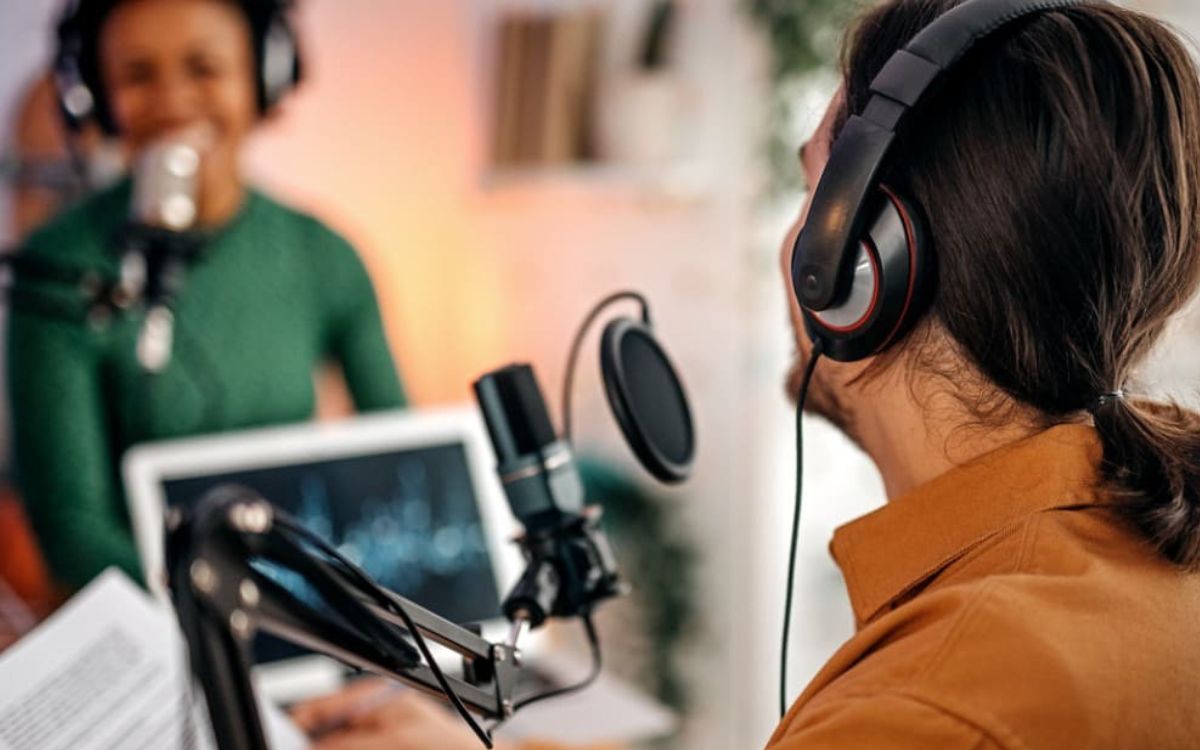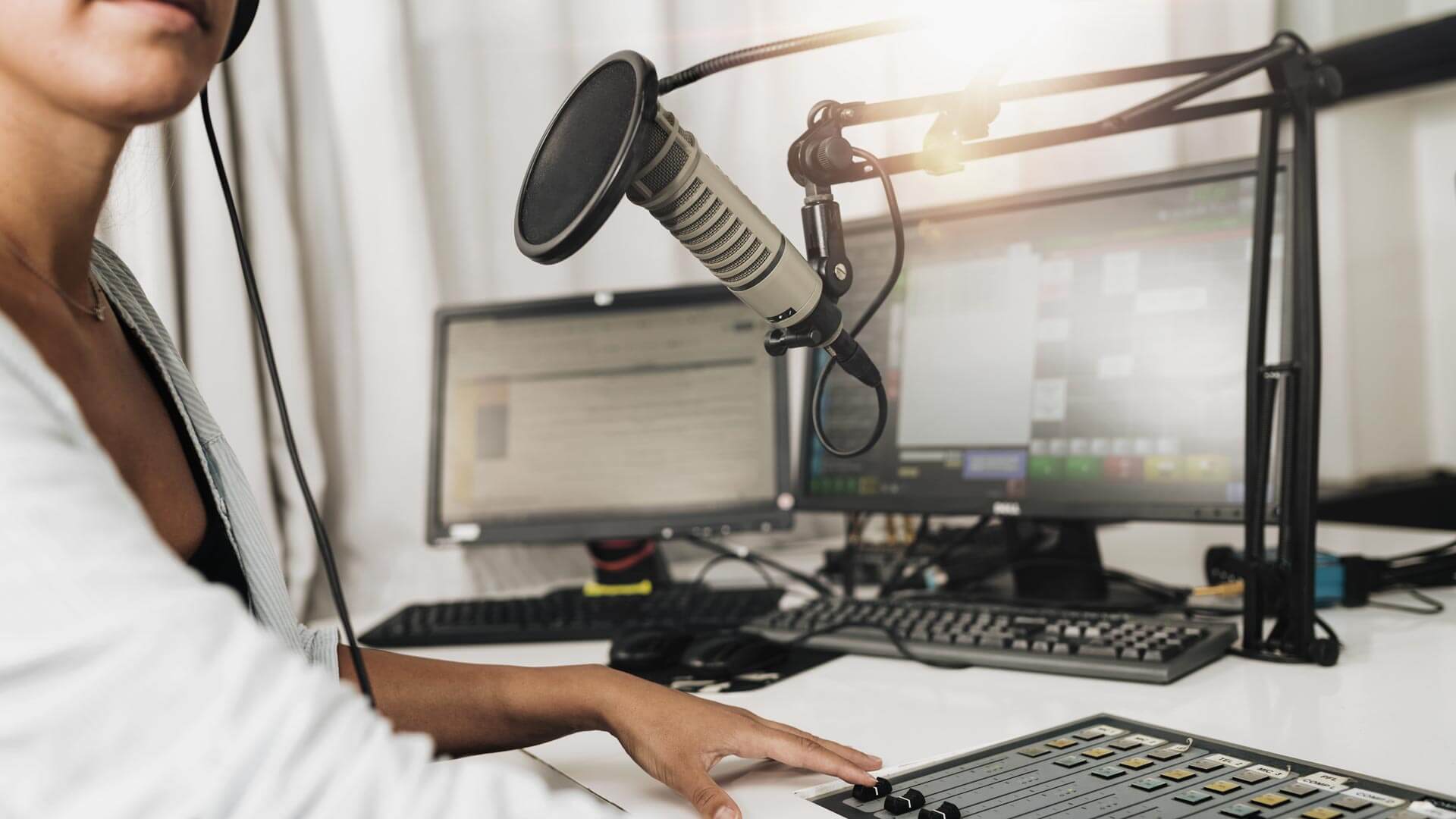Home>Events & Info>Podcast>How To Do A Live Podcast


Podcast
How To Do A Live Podcast
Modified: February 17, 2024
Learn how to do a live podcast and engage your audience with this comprehensive guide. Get tips, tricks, and best practices for hosting successful podcasts.
(Many of the links in this article redirect to a specific reviewed product. Your purchase of these products through affiliate links helps to generate commission for AudioLover.com, at no extra cost. Learn more)
Table of Contents
- Introduction:
- Step 1: Planning Your Live Podcast
- Step 2: Choosing the Right Equipment
- Step 3: Setting Up Your Recording Space
- Step 4: Selecting a Live Streaming Platform
- Step 5: Promoting Your Live Podcast
- Step 6: Going Live and Engaging with Your Audience
- Step 7: Post-production and Distribution
- Conclusion
Introduction:
Podcasts have become an immensely popular medium for sharing information, stories, and conversations. With their flexibility and convenience, podcasts have become a go-to choice for both creators and listeners, allowing individuals to consume content on their own terms. However, with the rise of live streaming platforms, the live podcasting trend has gained significant traction.
A live podcast offers a unique and dynamic experience, allowing hosts to engage directly with their audience in real-time. It provides an opportunity to foster a sense of community, while also enhancing the interactive nature of the podcasting experience. Whether you want to host a live Q&A session, interview a guest, or simply share your thoughts and insights, conducting a live podcast can be a rewarding endeavor.
In this article, we will guide you through the process of how to do a live podcast, from planning to execution. We will explore the necessary steps, equipment, and strategies to ensure a successful and engaging live podcasting experience.
So, let’s dive in and discover the exciting world of live podcasting!
Step 1: Planning Your Live Podcast
Planning is the key to a successful live podcast. Before you go live, take the time to carefully consider the purpose, format, and content of your show. Here are some essential steps to help you plan your live podcast:
- Define your podcast’s topic and niche: Determine the focus of your podcast by identifying your target audience and selecting a specific topic or niche that aligns with their interests. This will help you create content that resonates with your listeners and attracts a dedicated following.
- Establish your format: Decide on the format of your live podcast. Will it be a solo show, an interview-style format, or a panel discussion? Consider what format would best suit your content and audience engagement goals.
- Set a schedule: Choose a consistent day and time to broadcast your live podcast. This will allow your audience to anticipate and plan to tune in regularly. Consistency is key to building a loyal listener base.
- Create an outline: Develop an outline or script for each episode. This will help you stay organized during the live broadcast and ensure a smooth flow of conversation. Include key talking points, questions, and any necessary research or preparation.
- Plan for audience interaction: Consider how you will engage with your live audience during the podcast. Will you take live questions, comments, or polls? Prepare strategies to encourage audience participation and make them feel involved.
- Guest selection: If you plan to have guests on your live podcast, carefully choose individuals who can contribute valuable insights and engage with your audience. Coordinate with potential guests well in advance to ensure their availability.
Remember, thorough planning is crucial for a successful live podcast. It will not only help you stay organized but also ensure that your content is compelling, relevant, and resonates with your target audience.
Step 2: Choosing the Right Equipment
When it comes to hosting a live podcast, having the right equipment is essential for ensuring high-quality audio and a professional presentation. Here are some key considerations for choosing the right equipment:
- Microphone: Invest in a good quality microphone. A USB microphone is a popular choice for beginners due to its ease of use and affordability. However, if you’re looking for higher audio quality, consider a condenser microphone with an XLR connection.
- Headphones: A good pair of closed-back headphones is necessary for monitoring your audio during the live podcast. They help you ensure that the audio levels are balanced and there are no unwanted background noises.
- Audio Interface: If you opt for an XLR microphone, you will need an audio interface to connect it to your computer. The interface converts the analog audio signal into a digital format.
- Pop Filter: A pop filter is a screen that is placed in front of the microphone to minimize plosive sounds (such as “p” and “b” sounds) that can cause distortion in the audio. It helps improve the clarity of your recordings.
- Boom Arm or Mic Stand: A boom arm or microphone stand is used to position your microphone at the desired height and angle. It helps reduce handling noise and allows for comfortable use during your live podcast.
- Acoustic Treatment: Consider treating your recording space with sound-absorbing materials such as foam panels or bass traps to minimize echo and unwanted reflections. This will improve the overall sound quality of your recordings.
- Streaming Software: Depending on the platform you choose for live streaming, you may need streaming software. OBS Studio and Streamlabs OBS are popular options that allow you to stream your podcast to platforms like YouTube, Facebook, or Twitch.
Remember to do thorough research and choose equipment that fits your budget, technical requirements, and desired audio quality. Investing in good quality equipment will significantly enhance the overall production value of your live podcast.
Step 3: Setting Up Your Recording Space
The quality of your recording space plays a crucial role in ensuring clear and professional-sounding audio for your live podcast. Here are some tips to help you set up your recording space:
- Select a quiet location: Choose a room or area with minimal background noise. Avoid places near busy streets, loud appliances, or other sources of disturbance. You want to create a quiet environment where your voice will be the primary focus.
- Minimize echo: Echo can be a common issue in untreated rooms. To reduce echo, consider using sound-absorbing materials such as foam panels, acoustic curtains, or even blankets on the walls. These treatments help minimize reflections and improve the overall sound quality.
- Positioning the microphone: Place your microphone at the proper distance from your mouth to achieve the best sound quality. Experiment with different positions and angles to find the optimal placement that captures clear audio without picking up excessive background noises.
- Desktop or stand setup: Depending on your preference and equipment, you can choose between a desktop setup or a microphone stand. A desktop setup can be convenient if you have limited space, while a microphone stand provides more flexibility in adjusting the microphone’s height and angle.
- Ensure proper lighting: While audio quality is essential for a live podcast, don’t neglect the importance of good lighting. Make sure your face is well-lit and visible during the live stream. Natural or diffused lighting is ideal, but you can also use artificial lighting sources to achieve a bright and flattering look.
- Eliminate distractions: Clear your recording space of any distractions or clutter that might be visible in the background. Keep the focus on you and your content, creating a clean and professional appearance for your live podcast.
- Consider room temperature: Recording for an extended period can make the room temperature rise. Make sure your recording space is adequately ventilated or air-conditioned to prevent discomfort while podcasting.
By following these steps, you can create a dedicated and optimized recording space for your live podcast. A well-prepared and acoustically treated environment will contribute to the overall professionalism and clarity of your audio.
Step 4: Selecting a Live Streaming Platform
Once you have planned your content, prepared your equipment, and set up your recording space, it’s time to choose a live streaming platform for your podcast. There are several popular options available, each with its own features and audience reach. Here are some considerations to help you select the right live streaming platform:
- YouTube Live: YouTube is the world’s largest video-sharing platform and offers a powerful live streaming feature. Broadcasting your live podcast on YouTube allows you to reach a wide audience and take advantage of its extensive search capabilities.
- Facebook Live: Facebook Live is another popular option, especially if you have a significant following on the platform. It allows you to directly engage with your Facebook audience, notify them of upcoming broadcasts, and receive real-time comments.
- Twitch: Twitch is primarily known as a platform for live gaming, but it has also gained popularity for live podcasting. If your podcast content appeals to a gaming or tech-savvy audience, Twitch can be a great platform to leverage.
- Instagram Live: If your podcast has a strong visual component or you want to engage with an audience that is already active on Instagram, consider using Instagram Live. It allows you to stream live videos and interact with your followers through comments and likes.
- Periscope (Twitter Live): Periscope is Twitter’s integrated live streaming platform. It allows you to broadcast your podcast live to your Twitter followers and engage with them through comments and reactions.
- Other platforms: Depending on your target audience and niche, there may be other live streaming platforms that align with your podcast’s content. Platforms like LinkedIn Live, Vimeo Live, and DLive are worth exploring if they cater to your audience demographic.
Consider your target audience, the features offered by each platform, and the level of engagement you desire when making your decision. You can also explore multi-streaming options using services like Restream or Streamlabs OBS to simultaneously stream your live podcast to multiple platforms, expanding your reach even further.
The choice of your live streaming platform is a critical decision that will impact your audience reach and engagement. Take the time to evaluate the pros and cons of each platform to make an informed decision that aligns with your podcasting goals.
Step 5: Promoting Your Live Podcast
Promoting your live podcast is crucial to attract an audience and maximize engagement during your live streams. Here are some strategies to effectively promote your live podcast:
- Create engaging promotional content: Develop eye-catching graphics, videos, or teaser clips that showcase the highlights of your upcoming live podcast. Share them on your website, social media channels, and email newsletters to generate curiosity and excitement among your audience.
- Utilize social media platforms: Leverage the power of social media to promote your live podcast. Share regular updates, behind-the-scenes moments, and sneak peeks to build anticipation. Encourage your followers to share and spread the word about your live streams, extending your reach organically.
- Collaborate with other podcasters or influencers: Collaborate with influencers or other podcasters in your niche to cross-promote your live podcast. Guest appearances, joint streams, or shoutouts can introduce your podcast to new audiences and create a mutually beneficial promotional opportunity.
- Engage with your audience: Interact with your audience on social media platforms, responding to comments, and addressing their questions or suggestions. This level of engagement creates a sense of community and encourages participation during your live podcast.
- Promote on your website or blog: Utilize your website or blog to promote your live podcast. Create dedicated landing pages for your live episodes, include countdown timers, and provide subscription options to capture email addresses for future updates.
- Utilize email marketing: Build an email list of your podcast subscribers and send regular newsletters or updates about your upcoming live streams. Personalize your emails and emphasize the unique benefits of joining your live podcast to encourage attendance.
- Consider paid advertising: If you have the budget, consider running targeted advertising campaigns on platforms like Facebook, Instagram, or Google Ads. This can help you reach a broader audience and attract new listeners to your live podcast.
Remember to start promoting your live podcast well in advance to generate momentum and build anticipation. Consistency in your promotional efforts is key to attracting and retaining an engaged audience for your live streams.
By implementing these strategies, you will enhance the visibility and reach of your live podcast, increasing the chances of capturing a larger audience for your broadcasts.
Step 6: Going Live and Engaging with Your Audience
Once you have planned, prepared, and promoted your live podcast, it’s time to go live and engage with your audience. Here are some tips for a successful live podcasting experience:
- Test your setup: Before going live, ensure everything is working properly. Test your audio levels, internet connection, and streaming software to avoid any technical issues during the live broadcast.
- Introduce yourself and the topic: Start your live podcast by introducing yourself and giving a brief overview of the episode’s topic. This helps new viewers understand what to expect and creates a welcoming environment.
- Engage with live comments: Monitor and respond to live comments from your audience during the podcast. Address viewers by name, answer their questions, and acknowledge their contributions. This interaction fosters a sense of community and keeps your audience engaged throughout the broadcast.
- Encourage audience participation: Prompt your audience to participate by asking questions, conducting polls, or soliciting opinions on specific topics. Encourage viewers to actively participate in the chat or use a designated hashtag on social media to bring the conversation beyond the live podcast.
- Be authentic and personable: Show your personality and be yourself during the live podcast. Speak naturally, share personal anecdotes, and show genuine enthusiasm for the topic. This helps create a connection with your audience and makes the experience more enjoyable for everyone.
- Manage time effectively: Stay mindful of time constraints and ensure that you cover all the planned content within the allotted time. This will help you maintain a consistent schedule and respect the time of your audience.
- Consider guest interactions: If you have guests on your live podcast, make sure to provide them with opportunities to contribute their insights and engage with the audience. Give them space to share their thoughts and encourage viewers to ask questions directly to the guests.
- Thank your audience: Once the live podcast is coming to an end, express gratitude to your audience for joining and for their active participation. Let them know where they can find more information, subscribe to future episodes, or engage with you further.
- Review and improve: After each live podcast, take the time to review the episode’s performance. Assess audience engagement, analyze feedback, and identify areas for improvement. Continuous learning and refinement will help you evolve as a live podcast host.
Remember, engaging with your audience is the essence of a live podcast. By actively involving them in the conversation, responding to their comments, and nurturing a sense of community, you will create a captivating live experience that keeps viewers coming back for more.
Step 7: Post-production and Distribution
After the live podcast is over, your work is not yet complete. Step 7 involves post-production and distribution to ensure your recorded session reaches a wider audience and maintains its quality. Here’s what you need to consider:
- Edit the recording: Review the recorded live podcast and make any necessary edits. Remove any technical glitches, background noise, or long pauses to create a polished final product. Consider adding an intro, outro, or music to enhance the overall listening experience.
- Enhance the audio: Use audio editing software to enhance the audio quality. Adjust the volume levels, equalize the audio, and apply noise reduction to ensure clear and balanced sound throughout the episode.
- Add show notes and timestamps: Create show notes to accompany your episode, summarizing the main topics, key takeaways, and any relevant links or resources discussed during the live podcast. Timestamp important moments in the episode to help listeners navigate to specific sections of interest.
- Choose a podcast hosting platform: Select a podcast hosting platform to upload and distribute your episodes. Popular options include Libsyn, Buzzsprout, and Podbean. These platforms provide the necessary RSS feed and distribution capabilities to ensure your podcast is available on various podcast directories.
- Submit to podcast directories: Submit your podcast to popular directories like Apple Podcasts, Spotify, Google Podcasts, and Stitcher. This increases the discoverability of your live podcast and makes it easily accessible to a wider audience.
- Promote the recorded episode: Once the edited and finalized episode is ready, promote it on your website, social media profiles, and email newsletters. Encourage your audience to listen, share, and leave reviews to boost visibility and attract new listeners.
- Engage with your audience post-live: Even after the live session is over, continue engaging with your audience. Respond to comments, questions, and feedback on social media or through email. This ongoing interaction helps build relationships and loyalty among your audience.
- Monitor analytics: Keep track of key metrics such as downloads, listens, and audience engagement through your podcast hosting platform’s analytics. This data provides valuable insights into your podcast’s performance and helps you make informed decisions for future episodes.
- Repurpose the content: Consider repurposing your live podcast content into other formats, such as blog articles, video clips, or social media posts. This allows you to reach different audiences and expand your content marketing efforts.
By following these post-production and distribution steps, you can maximize the reach and impact of your live podcast beyond the initial live stream. Remember to ensure consistent quality and promote each episode to keep building your listener base and growing your podcasting brand.
Conclusion
Hosting a live podcast offers a dynamic and engaging way to connect with your audience in real-time. By following the steps outlined in this guide, you can successfully plan, prepare, and execute your live podcast with confidence. Let’s recap what we covered:
We started by emphasizing the importance of meticulous planning and defining your podcast’s topic and format. We then discussed the significance of selecting the right equipment, including microphones, headphones, and streaming software, to ensure high-quality audio for your live podcast.
We also explored the process of setting up a suitable recording space, considering factors such as noise reduction, microphone placement, and lighting. Furthermore, we detailed the various live streaming platforms available and provided guidance on choosing the one that aligns with your audience and promotional goals.
Promotion plays a key role in attracting and engaging with your audience, so we delved into effective strategies for promoting your live podcast. From social media marketing to collaborations and email marketing, we highlighted the importance of building anticipation and maintaining consistent communication with your audience.
When it comes to going live, we discussed the significance of active audience engagement, emphasizing the value of live comments and audience participation. By being authentic and personable, you can create a connection with your audience and foster a sense of community during your live podcast.
After the live broadcast, post-production and distribution take center stage. We outlined the importance of editing the recording, enhancing the audio quality, and selecting a reliable podcast hosting platform. Submitting your podcast to directories, promoting the episode, and engaging with your audience post-live will help extend the reach and impact of your podcast.
In conclusion, hosting a live podcast requires careful planning, engaging content, quality equipment, and effective promotion. By following the steps outlined in this guide and incorporating your own personal touch, you can elevate your podcasting experience and create a compelling and unforgettable live podcast that resonates with your audience.

